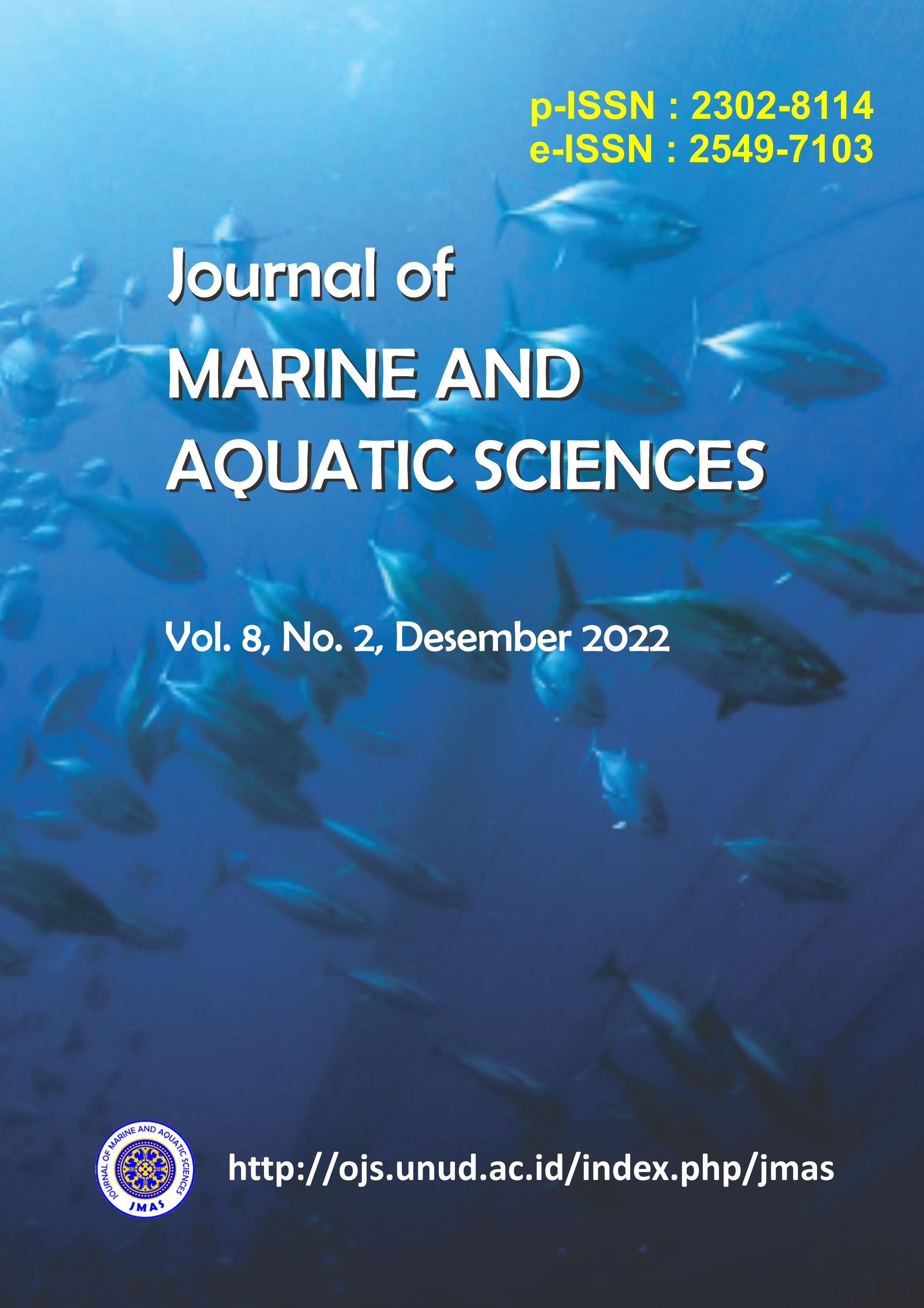Korelasi indeks keanekaragaman dan kerapatan tegakan dengan simpanan karbon mangrove Estuari Perancak
Abstract
Land use change is a huge threat for mangrove ecosystems,which are known for their high carbon sequestration and storage capacity.Vegetation restoration efforts are often undertaken, but fail to restore optimal ecosystem carbon sequestration. The mangrove forest of Perancak Estuary with a history of restoration project was made the subject of this research. The objectives include: (i) estimation of mangrove biomass and sediment carbon stock; (ii) comparison of restored, mixed and natural mangroves’ total carbon stock; (iii) correlational analysis between stand density and diversity indices with ecosystem carbon stock. Nine sampling points were determined within three mangrove categories (mixed, natural, restored). Stand characteristics and diameter at breast height (DBH) were measured to allometrically estimate biomass carbon. Sediment carbon was analyzed with Loss on Ignition (LOI) method. Correlational analysis was done with Pearson’s correlation coefficient. Total ecosystem carbon stock is 4472,93 tonnes ha-1 (biomass C: 4046,31 tonnes ha-1; sediment C: 426,62 tonnes ha-1). Highest carbon stock value was found on restored mangroves due to high contribution of sediment C offsetting its low biomass C. Lowest carbon stock value was found on natural mangroves due to decreased root biomass production and increased decomposition due to change in tidal regimes. There is a strong positive correlation between stand density and biomass carbon. Simpson index of diversity has a stronger (though non significant) correlation with biomass carbon than Shannon-Wiener index.
Downloads

This work is licensed under a Creative Commons Attribution 3.0 International License.
Copyright 2012 - 2023 Journal of Marine and Aquatic Sciences (JMAS)
Published by Fakultas Kelautan dan Perikanan Universitas Udayana, Denpasar, Bali, Indonesia
JMAS (p-ISSN 2302-8114; e-ISSN 2549-7103)


